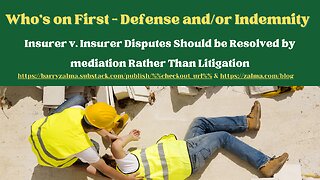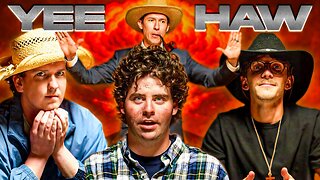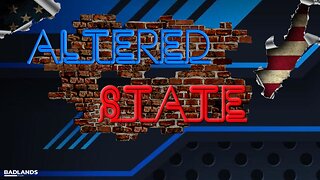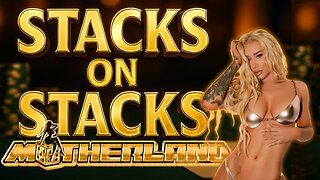Premium Only Content

What is Mold?
A Video Explaining Mold & its Effects on Humans
The term “mold” is a defined as “a simple microscopic organism that is found everywhere, indoors and outdoors. Mold belongs to the Fungi Kingdom. (All molds are fungi, but not all fungi are molds).” [Managing Microbial Problems in Buildings, A Teaching Glossary by Patrick J. Moffett & Environmental Management & Engineering, Inc., 2003.] Mold is a microscopic version of a mushroom. Like mushrooms, most molds consist of a fruiting body, a root system, and very small seeds known as spores. The filaments are the root system that micro-fungi send into whatever material they are growing on, so that they can soften and digest the material.
Mold is everywhere. It is a living thing that is neither animal nor what is usually considered a plant. It grows naturally outdoors. The spores, which mold create in order to reproduce, are present in the air. When mold moves indoors it grows rapidly in environments that contain an excessive amount of moisture.
Homeowners unintentionally create good conditions for mold growth through moisture collected from a leaky roof, broken pipe, clogged drainage system, or lack of waterproofing materials in a shower stall. Any one of these things can initiate the process of mold growth.
In addition to the presence of moisture, mold needs a nutrient source to develop and spread. The necessary nutrients are present in most homes and commercial structures. Nutrients that are consumed by molds include wallpaper, cardboard, ceiling tiles, wood, wood products, newspapers, carpeting, or any product containing cellulose.
Many molds are benign. Some are edible, such as mushrooms and the fungi that convert milk to cheese. Other molds, called mycotoxins, are claimed to produce toxins harmful to human health. Mycotoxins can be absorbed into the human body through the intestinal lining, airway paths, and skin. Human exposure to mold can be very dangerous.
Mycologists have estimated that there are hundreds of thousands of species of mold, each having its own preference for moisture, temperature, and food source. Mold grows on all live plants, dead plants, animal matter, and in soil. Spores are blown about by the wind and are almost always found in indoor and outdoor air. They are a normal component of house dust.
Mold spores are hardened containers, which possess all the DNA instructions needed to create new mold creatures. If they bump into dry walls they simply rebound and continue floating. When they bump into wet walls, however, they stick. When the shell of a mold spore is broken, mold is created by the emergence of several groping, arm-like structures called hyphae. These hyphae are used by molds to obtain nourishment from sulfur grains in concrete, metals in paint, or, for one especially abundant species found at some time in almost every house in northern temperate climates, the antibiotic produced when they land on wood. The hyphae excrete enzymes that break down complex organic materials.
Mold typically grows on organic materials that remain moist for more than 24 hours. Materials exposed to high humidity can become moist enough to support mold growth. Good housekeeping requires, therefore, a reduction in humidity and the drying out of any moisture that might exist in organic compounds that could support mold growth. If proper maintenance is not followed then the volatile organic compounds (VOCs) released by some molds that are toxic and associated with Sick Building Syndrome (SBS) may grow and cause injury.
© 2021 – Barry Zalma
Barry Zalma, Esq., CFE, now limits his practice to service as an insurance consultant specializing in insurance coverage, insurance claims handling, insurance bad faith and insurance fraud almost equally for insurers and policyholders.
He also serves as an arbitrator or media
tor for insurance related disputes. He practiced law in California for more than 44 years as an insurance coverage and claims handling lawyer and more than 54 years in the insurance business.
Subscribe to Excellence in Claims Handling at https://barryzalma.substack.com/welcome.
He is available at http://www.zalma.com and zalma@zalma.com. Mr. Zalma is the first recipient of the first annual Claims Magazine/ACE Legend Award. Over the last 53 years Barry Zalma has dedicated his life to insurance, insurance claims and the need to defeat insurance fraud. He has created the following library of books and other materials to make it possible for insurers and their claims staff to become insurance claims professionals.
Go to training available at https://claimschool.com; articles at https://zalma.substack.com, the podcast Zalma On Insurance at https://anchor.fm/barry-zalma; Follow Mr. Zalma on Twitter at https://twitter.com/bzalma; Go to Barry Zalma videos at https://www.rumble.com/zalma ; Go to Barry Zalma on YouTube- https://www.youtube.com/channel/UCysiZklEtxZsSF9DfC0Expg; Go to the Insurance Claims Library – https://zalma.com/blog/insurance-claims-library/ The last two issues of ZIFL are available at https://zalma.com/zalmas-insurance-fraud-letter-2/ podcast now available at https://podcasts.apple.com/us/podcast/zalma-on-insurance/id1509583809?uo=4
-
 10:17
10:17
Barry Zalma, Inc. on Insurance Law
1 year agoWho's on First - Defense and/or Indemnity
189 -
 LIVE
LIVE
Laura Loomer
1 hour agoEP119: Trump's First 100 Days: Were Promises Kept?
1,353 watching -
 LIVE
LIVE
Man in America
5 hours ago🚨 RED ALERT: Miscarriages & Infertility Are SKYROCKETING—OBGYN Warns of Population Collapse
516 watching -
 23:33
23:33
Friday Beers
2 hours agoTensions Explode During Wild West Mafia Game!
35 -
 LIVE
LIVE
Badlands Media
18 hours agoAltered State S.3, Ep. 26
2,715 watching -
 LIVE
LIVE
JdaDelete
4 hours agoBanjo-Kazooie - wedNESday
83 watching -
 30:09
30:09
Iggy Azalea
6 hours ago $3.15 earnedplaying motherland
34.4K7 -
 LIVE
LIVE
SpartakusLIVE
3 hours agoDuos w/ Rallied || A Spartan and a Dragon ENTERTAIN the MASSES
266 watching -
 20:09
20:09
Exploring With Nug
11 hours ago $1.28 earnedVanished After Driving Away… I Spent the Day Searching Lakes
23.9K2 -
 1:14:13
1:14:13
Glenn Greenwald
3 hours agoLee Fang and Leighton Woodhouse Look Back on Trump’s First 100 Days; Lara Friedman on New Laws Barring Israel Criticism | SYSTEM UPDATE #446
62.7K41